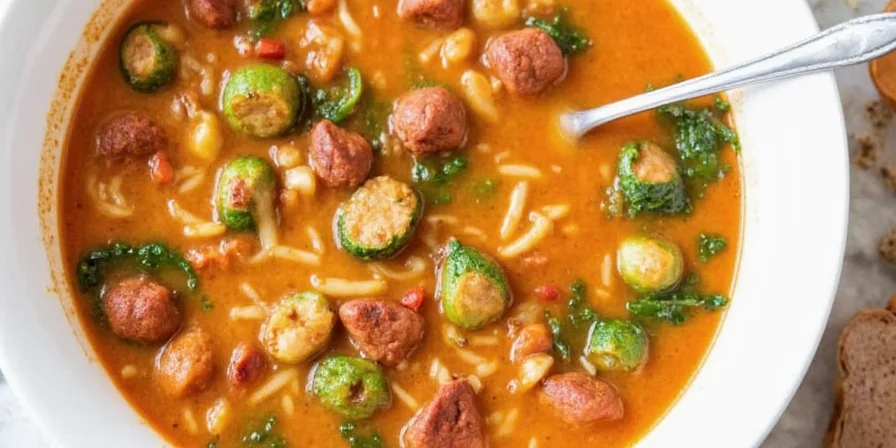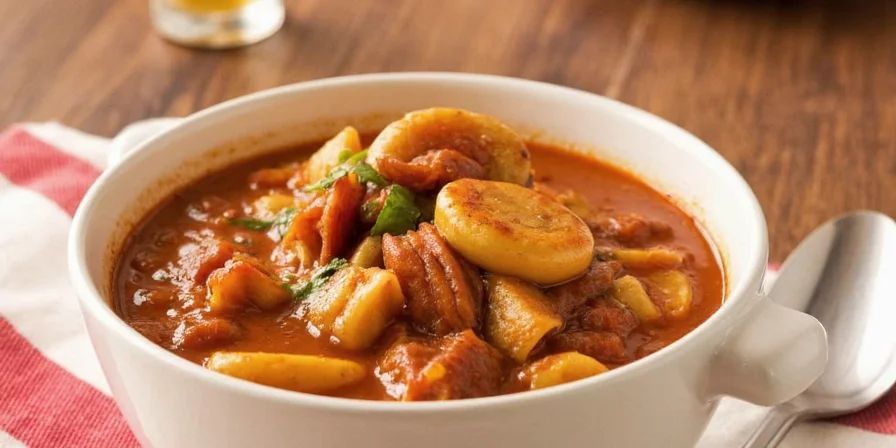Zuppa Toscana Secrets: 7 Spicy Twists to Make Olive Garden Jealous!
Ever tasted Olive Garden’s Zuppa Toscana and thought, "This is great... but what if it had a little more *zing*?" You're not alone! The magic of this beloved soup lies in its rustic Italian soul — and yes, that means it's ripe for some spice-sational upgrades.
In this article, we’re diving into the world of Innovative Spice Pairings, unlocking top-secret recipe twists that will make your version of Zuppa Toscana not just good — but unforgettable. Whether you're a seasoned pro or a weekend kitchen warrior with a spice rack obsession, we’ve got tips that’ll turn your soup from 'meh' to 'mamma mia!'
Table of Contents
- What Makes Zuppa Toscana Special?
- Classic Ingredients Breakdown
- Top Secret Spice Pairings for Zuppa Toscana
- Pro Tips: How to Balance Bold Flavors
- Spice-Up Your Soup: 7 Unique Variations
- Pairing Suggestions: What to Serve with Spiced-Up Zuppa Toscana
- Conclusion
What Makes Zuppa Toscana Special?
Olive Garden’s Zuppa Toscana isn’t just soup — it’s a hug in a bowl. Originally inspired by Tuscan peasant cuisine, this hearty dish combines kale, spicy Italian sausage, and potatoes in a creamy broth that feels indulgent without being too heavy.
But here’s the kicker: while the base is solid, the true potential of this soup lies in how you season it. Most home versions stop at salt and pepper, missing out on an entire flavor dimension waiting to be unlocked.
Classic Ingredients Breakdown
Let’s start with the traditional Zuppa Toscana formula:
- Italian Sausage: Usually sweet or hot, depending on your heat preference.
- Kale: Adds texture and earthiness.
- Potatoes: For that comforting starchiness.
- Broth: Chicken or vegetable-based, often with garlic and onion.
- Cream: Half-and-half or heavy cream for richness.
Top Secret Spice Pairings for Zuppa Toscana
The key to elevating Zuppa Toscana lies in thoughtful spice blending. Here are our top secret pairings that will make your soup sing:
| Spice | Flavor Profile | Why It Works |
|---|---|---|
| Smoked Paprika | Sweet, smoky warmth | Adds depth and mimics slow-cooked flavor without hours on the stove. |
| Red Pepper Flakes | Dry heat with fruity undertones | Complements spicy sausage and adds subtle fire without overpowering. |
| Fennel Seeds | Anise-like, licorice note | Enhances Italian sausage flavor naturally found in many blends. |
| Nutmeg | Earthy, warm, slightly nutty | Boosts creaminess and balances kale’s bitterness. |
| Lemon Zest | Fresh, citrusy brightness | Cuts through richness and wakes up the palate. |
Pro Tips: How to Balance Bold Flavors
When working with spices, balance is everything. Here’s how to nail it:
- Toast Your Spices First: A quick toast in a dry pan brings out essential oils and deepens flavor. Don’t skip it!
- Layer Gradually: Add spices in stages — early during cooking and again at the end for freshness.
- Use Acid to Cut Through: A splash of white wine vinegar or lemon juice can rescue an overly rich soup.
- Embrace Umami: Consider adding a dash of Worcestershire sauce or soy sauce to boost savoriness.
- Taste as You Go: Adjust seasoning before adding dairy; once cream is added, flavors dull slightly.
Spice-Up Your Soup: 7 Unique Variations
Ready to get creative? Here are seven innovative takes on Zuppa Toscana using spice pairings to wow your guests (or yourself on a cozy night):
- North African Zuppa: Swap red pepper flakes with ras el hanout and add harissa paste for a North African twist. Garnish with chopped mint.
- Mexi-Tuscana: Use chorizo instead of Italian sausage and add cumin + smoked chipotle powder. Top with avocado crema.
- Umami Explosion: Stir in porcini powder, tamari, and black garlic paste for a deeply savory experience.
- Coconut Curry Zuppa: Add coconut milk instead of cream and curry powder. Substitute spinach for kale.
- Garlic Lovers’ Dream: Roast 4 cloves of garlic and add them with rosemary and crushed red pepper flakes.
- Smoke & Fire: Use smoked paprika, chipotle in adobo, and finish with a drizzle of smoked oil.
- Herbaceous Heaven: Fresh thyme, parsley, and oregano go a long way. Add with lemon zest for a vibrant finish.

Pairing Suggestions: What to Serve with Spiced-Up Zuppa Toscana
Once you've turned your soup into a flavor bomb, don’t skimp on the sides! Here are perfect pairings to complete the meal:
- Bread: Crusty sourdough or focaccia for dunking (and mopping up every last drop).
- Salad: Light arugula salad with lemon vinaigrette cuts through richness beautifully.
- Wine: Chianti or Sangiovese complements the Italian theme. If you prefer white, try Pinot Grigio.
- Cheese: Parmesan shavings or Pecorino Romano sprinkle on top for extra umami.
- Dessert: Finish with a slice of lemon ricotta cake or tiramisu for contrast.

Conclusion
Zuppa Toscana might be rooted in tradition, but that doesn’t mean it has to stay boring. With these top secret spice pairings, you’re not just making soup — you’re crafting an experience.
Whether you stick to the classics or go full experimental with global flavors, the key is balance, boldness, and knowing when to let the spices shine.
So grab your spoon, dust off that spice rack, and get ready to impress your family, friends, or even your future self. And remember — the best soup isn't the one that sticks to the rules… it's the one that breaks them deliciously.










 浙公网安备
33010002000092号
浙公网安备
33010002000092号 浙B2-20120091-4
浙B2-20120091-4